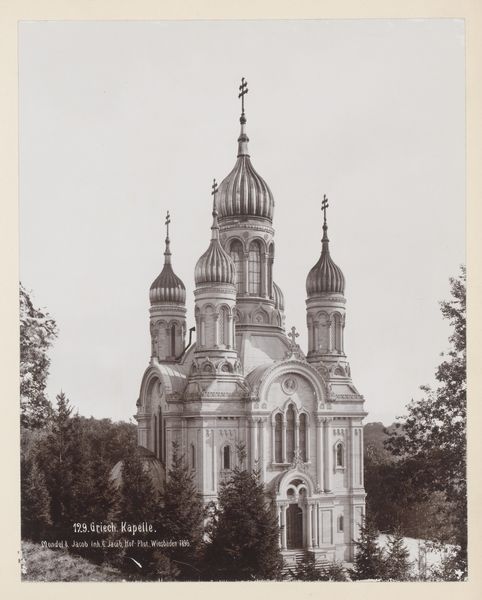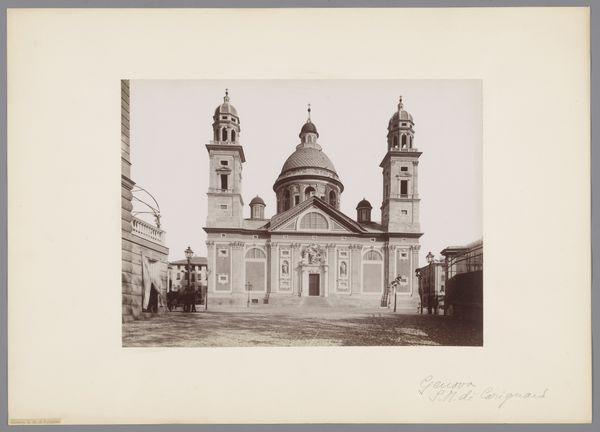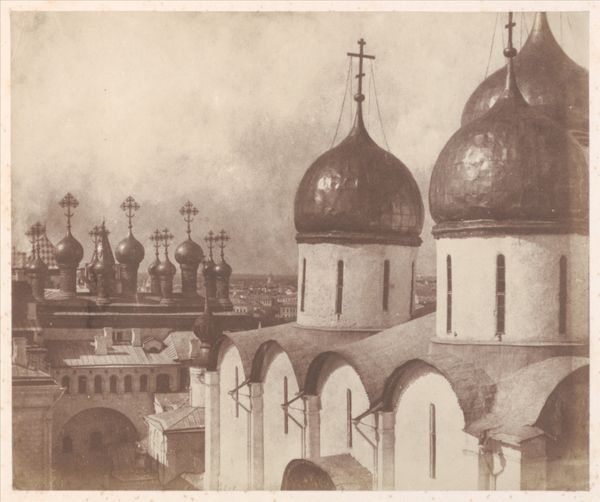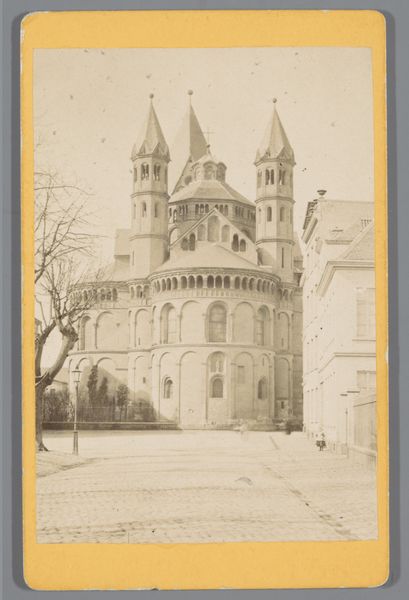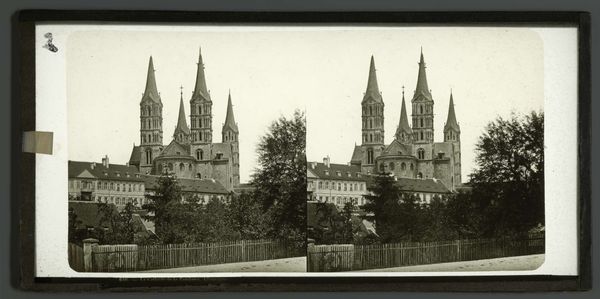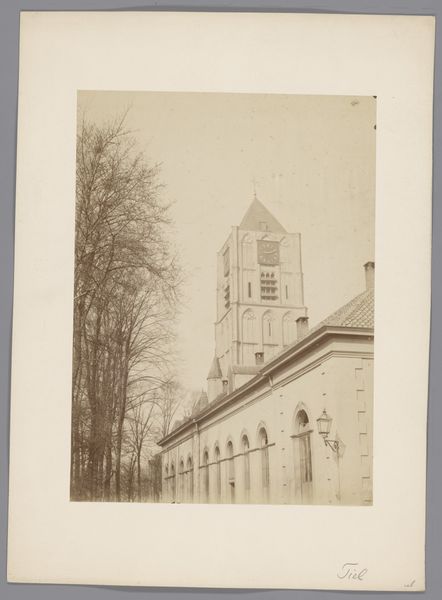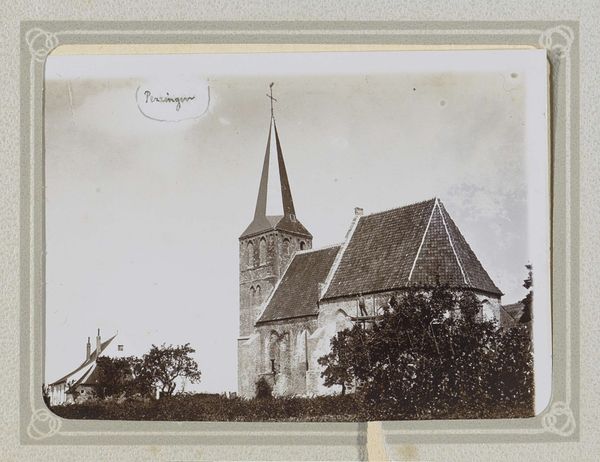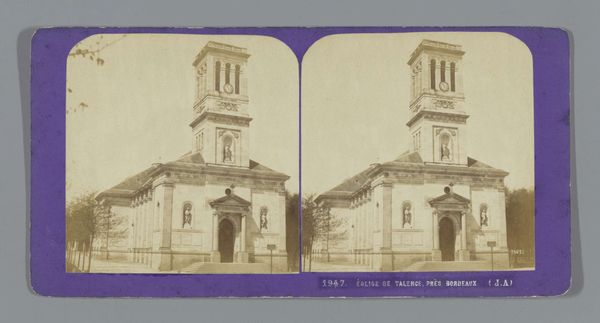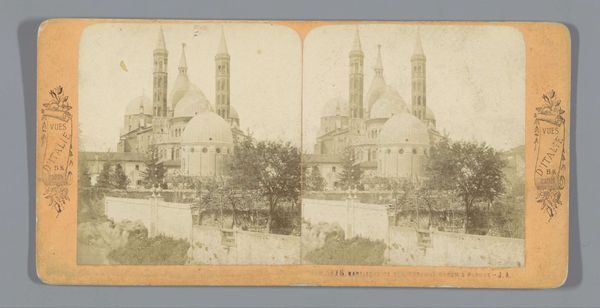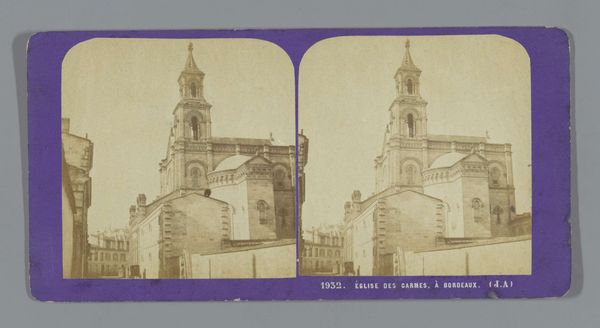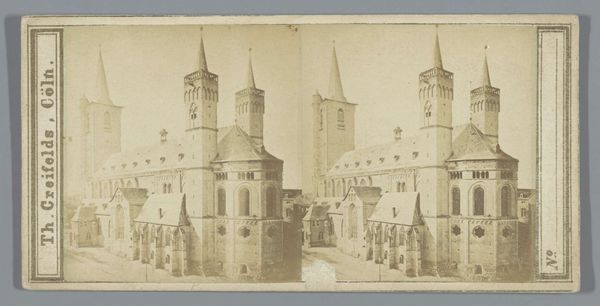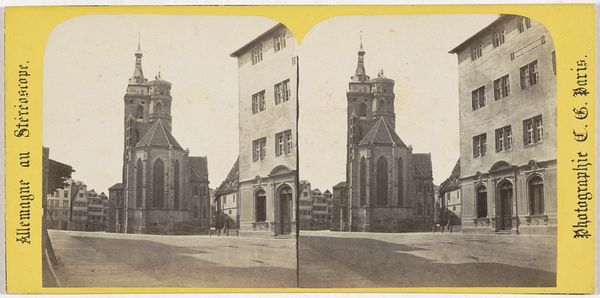
print, photography, architecture
#
portrait
#
still-life-photography
# print
#
photography
#
framed image
#
cityscape
#
framed
#
architecture
#
realism
#
statue
Dimensions: height 85 mm, width 170 mm
Copyright: Rijks Museum: Open Domain
This is a stereoscopic glass slide of Catharinakerk in Stockholm, made by Ferrier Père-Fils et Soulier. The stereoscopic process was a popular way to view images in the 19th century, creating an illusion of three-dimensionality. Mass production of these photographic slides was enabled by industrial advancements and the development of standardized formats, making visual media accessible to a wide audience. The process involved careful attention to detail, from the initial photography to the printing and mounting of the slides. The photographic emulsion itself is key; the blacks are created by the presence of tiny particles of silver. This use of silver is an interesting intersection of technology and value. Silver is intrinsically valuable, but also essential to the proliferation of visual information that occurred in this era. Looking closely at the object brings attention to both the artistry and the modes of production which reflect the changing social landscape of the time. This invites us to consider the complex relationship between art, technology, and society.
Comments
No comments
Be the first to comment and join the conversation on the ultimate creative platform.
